Matador Network's Blog, page 2236
July 29, 2014
Las Vegas trip planning cheat sheet
MY FIANCE WANTS his bachelor party to take place in Vegas (thanks, Hangover…). I’m not a huge fan of the city myself, so I can’t really help him plan anything good, but this infographic pretty much provides the perfect amount of information a first-timer, or even a Vegas veteran, could benefit from. The next time I am in this city, I’ll be sure to make use of the $1 frozen Margaritas at Casino Royale.
Image via Visual.ly. Click to enlarge. 

11 things you'll miss about Portland

Photo: Slack12
1. All the Mainers here
If you’re a born-and-raised Maine kid like me, you’ve probably found that Maine is an incredibly difficult place to ditch. You’ve most likely spent time shuffling through our state’s assortment of “things”: You’ve done the “Bar Harbor thing.” You’ve done the “working as a raft guide up at the Forks thing.” You’ve done the “living above your Mom’s garage and hanging out with the group of three random kids from high school who are still here thing.”
Now you’ve completed your stint at the “Portland thing.”
2. Mediocre street performers
The guy in the L.L. Bean barn jacket who robotically shakes a Bible at you outside of Planned Parenthood every Friday. Plus the guy who sits behind him with a sign that reads: “Shut up!” (Bless his heart.)
The breakdancers who kill it to Prince outside of MECA every First Friday, usually shirtless no matter the season. (Sexy. Don’t ever stop.)
All the “fire breathers” down at Tommy’s Park kind-of twirling batons around but mostly just sitting cross-legged on the ground comparing face tattoos.
That huge steel-drum band that congregates on a random side street, blocks your car in, and forces you to listen to steel-drum music on a random Tuesday.
3. Parking bans
A parking ban is when everyone in the entire city of Portland has to move their car out of the downtown area and into tiny-as-fuck designated parking lots scattered around, miles away from anywhere you would possibly want to be (e.g., way, way down on Commercial Street next to a dark lumberyard).
These are great because 1) gunning into the last spot at some random daycare center in the West End fuels your competitive side. And 2) the entire city basically throws up its arms and decides to completely shut down. So everyone can congregate at Geno’s, drink snakebites, and discuss the outcome of The Wire again. And 3) you have to retrieve your car by 7am the next morning. So way before sunrise, the streets fill with snowsuited-up zombies carrying shovels.
It’s a community experience.
4. Portland’s singular strip club
PT’s-way-out-in-the-middle-of-nowhere-fucking-Showclub. PT, who are you and when will you bring topless females to actual downtown Portland? Why must we drive all the way out to big-box-store and one-star-hotel land? Do you know how weird it is to have your cab driver exit his vehicle and enter a strip club with you? Fix this, please.
5. ’90s Night at Bull Feeney’s
Every Thursday night in the Old Port an onslaught of bros stampede the upstairs bar at Bull Feeney’s to sing all the words to Barenaked Ladies’ “One Week” and drunkenly stick up for Eddie Vedder.
6. ’80s Night at Bubba’s Sulky Lounge
Every Friday night, the same group of bros dress up like your scary high school gym teacher so they can get in for free and grind against any, absolutely any girl with a crimped side-pony and off-the-shoulder sweater who will not turn around and say, “No.”
7. Friendly, joyous, carefree people everywhere
I once backed my ’99 Mercury Sable into a Prius in the Portland Whole Foods parking lot. The guy got out of the car and we LAUGHED ABOUT IT.
8. The odd little groups of people everywhere
Those men who knit at coffeeshops. The swing dancers who give free swing dance lessons and then dance with you afterwards, even though you’re awful and wearing the wrong shoes. My book club, that gets wine-wasted once a month and took a topless group photo one time. The scooter gang! That goes on a 15-mile scooter ride every summer!
9. All the fantastic nom-noms
The pulled-pork johnnycakes off of East Ender’s brunch menu are the best thing that ever entered my body.
10. All the places to swim
Dipping in the ocean at the East End beach, even though you bring your dog there to take a dump every morning.
Going over the bridge to Willard and trying to secure a postage stamp of real estate amongst the hundreds of high school girls in the same H&M bikini.
Tubing down the Presumpscot River with a couple six-packs in tow, each in its own flotation device.
11. All the free and pretty-much free events
The First Friday Art Walk, where you can casually walk into someone’s tiny studio space, nod at a painting they did, and down two solo cups of free wine while stuffing four complimentary egg rolls into your mouth / purse.
The Alive @ Five free concert series in Monument Square, where you can sort-of acknowledge a local band, sneak under the barrier around Shay’s Bar and Grill, and nibble off of someone’s abandoned plate of fries.
Green Drinks, where you can pay five bucks to get in and drink beer in the early evening with a bunch of 9-to-5ers, sip out of the gigantic stein you brought from home, and pretend to listen to the presenter (who is impossible to hear anyway because nobody bothered to turn the microphone on). 

If I had 1 more day in Kyoto

Photo: Agustin Rafael Reyes
If I could go back to Kyoto for a day…
I’d fly into Osaka International this time, and cut my transit time to the city center in half.
I’d hop on one of the regular buses headed toward the city and prepare myself for the near-hour of silence, as I don’t speak Japanese and the driver doesn’t speak more than five words of English. He’d turn up his Japanese radio or news station, and I’d sink back into my travel playlist for the six tracks of juice I’ve got left before my iPod dies. I’d wait for the things passing outside the window to look familiar. They never do.
I’d get off the bus at its first main stop, across the street from the Avanti Department store downtown on Higashikujo Nishisannocho. I’d cross the street and head into the department store, not because I want to do any shopping (yet), but because I remember a not-so-secret my grandmother told me on my last trip. I’d head straight for the basement, to find an enormous plaza of stalls serving every kind of food imaginable.

Photos clockwise from bottom left: Hideya HAMANO, Robert S. Donovan, Trey Ratcliff, Evan Leeson
I’d immediately gorge myself on the freshest maguro sashimi I could find, dipped in enough wasabi to make up for the lack of caffeine I’ve had so far. I would marvel at the amount of fish I was getting for the price, and entertain the fleeting notion that perhaps Japan was not that expensive after all. To balance out the healthiness of the tuna, I’d probably supplement with some shrimp and sweet potato tempura, and round it out with a Red Bull. After all, I’ve got a big day ahead of me.
I’d grab a Pocari Sweat for the road and return to Higashikujo Nishisannocho. Midday, I’d begin my incredibly sticky 2.9km trek, knowing full well that I’ll be soaked in sweat by the time I get to my destination, not out of exhaustion but out of humidity to a degree far more unpleasant than I’m used to.
Almost an hour after leaving Avanti, I’d finally have arrived at the very edge of the Shinkyogoku shopping arcade. I’d grab another Sweat — partially for the novelty, and partially because I’ve found the lemony oily drink strangely addictive — and take a moment to search my memory.
I’d recall the hours I spent here with my uncle and younger brother on my last trip, mentally retracing every step and desperately trying to remember where the store I’m looking for is hiding. Though the image is clear (neon lights and brightly colored toys, kitsch of the coolest variety, lots of nerd-paraphernalia, and a life-size foam statue of Giger’s Alien in a batmobile as the centerpiece), I’d be unable to remember its name or which of the zillion identical side streets it’s on.
I’d spend a few hours ducking and weaving through the crowds and the commerce, up streets and down alleys. Struggling and a little anxious, I’d overshoot the shop and find myself at the far end of the Teramachi district, just in time to grab some Shakey’s pizza for lunch, and I’d chuckle to myself about eating lackluster pizza in Japan.

Photos clockwise from bottom left: Slices of Light, Ayanami, Terao Kaionin, Slices of Light
Shortly after lunch, I’d realize that I’m wasting my time searching for a single store halfway around the world, and I’d resolve to spend my time more productively. With two main spots on my agenda, I’d pull out my phone and quickly do a Google Maps search for Nanzen-ji Okunoin. Nope, too cool for Google.
Flagging a cab, I’d ask for Nanzen-ji temple, and catch my breath in the air-conditioning for the 15 minutes it takes to get there. Rejuvenated, I’d get out and sidestep the crowd of tourists visiting the main temple that day. Running parallel to an old red aqueduct, I’d head up into the hills, through Kotoku-an. Further up and away from tourists and people in general, eventually I’d arrive at Nanzen-ji Okunoin, the shrine and waterfall in the woods.
I’d lose myself in my thoughts for a couple hours there, feeling like I’d walked right into a Final Fantasy video game, and marveling at how I managed to miss this on my last trip. I’d muse over what the other 2,000-some Kyoto temples must look like, squirreled away in the furthest reaches of the city.
I’d head back down the hill in the late afternoon, this time on a dinner mission. Passing by Shinjoin and Konchi-in, I’d cross Niomon Dori quickly before picking up the Tozai line at Keage Station. Another 15 minutes, and I’d change trains at Karasuma Oike Station, the halfway point, and take the Karasuma Line north into residential Kyoto. At Kuramaguchi Station, I’d hit the street moments before sunset, stomach growling like a gutted boar.

Photos clockwise from bottom left: ORAZ Studio, bass_nroll, Trey Ratcliff, Janne Moren
I’d head just a few blocks northwest, to the temple of Kanga-an. I’d poke about the gardens and candlelit premises casually, hoping to stumble on the secret that in recent years has been made slightly less-than-secret: a fully loaded bar hidden in the back. With luck on my side, I’d start by entertaining a Guinness, to complete the Japanese-Italian-Irish trifecta that represents both my unusual blend of ethnicities, as well as my culinary exploits of the day. After, I’d sip some homemade umeshu while inhaling course after course of house-specialty fucha ryori. I’d try to slow down, to take in the experience, the sights and smells, and the idea of being in a temple-bar-restaurant that was formerly the Emperor’s holiday retreat.
I’d completely lose track of time.
I’d check my phone and realize it’s much later than I thought. Swearing aloud and profusely, I’d realize the only way to make it back to the airport in time to catch my flight is to take a cab, so I hail one and collapse into the backseat while frantically blurting out “Osaka Airport” to the driver. He’d give me a look that I’d misinterpret as an “are you crazy” glance, but start the hour-long journey to the airport.
¥11,974 later, I’d rush into the airport and make it through security in a remarkably timely fashion. Twice I’d head in the wrong direction, misreading signs in my hurry, but I’d make it to my gate just in time to catch my flight home. 

Why Puerto Ricans can't vote [vid]
MOST AMERICANS don’t think of the United States as an empire in the traditional sense, but as it turns out, most Americans are wrong. The United States is in control of many territories that are technically part of the United States, but aren’t represented fully within our democracy.
Probably the most prominent example is the District of Columbia, where I currently live, and where votes at the national level count for basically nothing. DC even included a protest about their status on their license plates, which read: “Taxation Without Representation,” which, you may remember from your history class, was a large part of the reason we broke from England in the first place.
This video by YouTubing great CGP Grey points out a large number of territories that have the “part of the US but not totally part of the US” status, such as Puerto Rico. Check out the video to learn why the US system is organized this way. 

How to piss off an Ecuadorian

Photo: Rinaldo Wurglitsch
1. Ignore where Ecuador is located, or picture the entire country as a jungle.
Many foreigners arrive in Ecuador believing the country only consists of jungles and thatched-roof houses. Seriously? Ecuador is a relatively small country, but that’s not an excuse to arrive totally ignorant. Before visiting, you should at least have an idea of Ecuador’s history and its current situation.
But sure, if you want to piss off an Ecuadorian, just tell them that at some point you thought Ecuador was in Africa, ask if Ecuador is a Mexican state, imagine we only produce bananas, picture us merely wearing loincloths, or mention how surprised you are to find cars, cinemas, and people over five feet tall in the country.
2. Fail to carry sueltos in your wallet.
You arrive in the country and jump in a cab. If you want to begin your time in Ecuador arguing with your taxi driver, make sure you only have 20 dollar notes in your pocket. Same thing with a street vendor, the cashier at a café, or a bus driver.
In Ecuador, it’s almost mandatory to carry small notes and sueltos (coins). Otherwise, you’ll be the target of verbal abuse (ándate a la verga), or just be left alone in the middle of the street without any means of transportation.
3. Share that you think we all look like Delfín Quishpe.
Please. Not all of us wear indigenous traditional clothing or dress as colorfully as Delfín Quishpe. Our music isn’t just the Andean rhythms played in European plazas, and we’re good at more than soccer.
4. Shit-talk our family.
Ecuadorians love to be the “mama gallina,” making sure everybody feels welcome and is having a good time at parties. You’ll have a blast at any gathering…unless you make an inappropriate comment about a family member. Go on. Comment on how much weight the cousin has put on, or dare say the mom’s cooking isn’t to your taste. Just know that you’ll never be invited over again.
For an Ecuadorian, family comes first. And not only close relatives. We usually throw family parties with dozens of people: the cousins of your great uncle, the mother of your brother-in-law’s father, and so on.
5. Criticize the country.
We feel the same about Ecuador as we do about our family. We’re very proud of what we have: our food, our beautiful national parks, our art. If you immediately start complaining about traffic, long lines, lack of promptness, complicated bureaucracies, etc, you WILL be considered persona non grata.
6. Compliment the coastal regions when staying in the Ecuadorian Highlands, or vice versa.
This is another version of criticizing the country, combined with regional rivalry. The Highlanders will be emputados if they hear someone from the coast calling them serranos bobos. In turn, they’ll reply by calling the costeños a bunch of monos (monkeys) to piss them off. So if you want to piss off a Highlander, just tell them you think the food on the coast is better.
7. Take your time.
Take too long counting your money at the bank, start thinking about what you want to order only when you get to the counter, wait patiently for passing pedestrians at the zebra crossing, go ahead…dare take your time. Ecuadorians, in general, aren’t exactly punctual, but we get very annoyed if we’re kept waiting.
8. Cut or otherwise cheat while waiting in line.
You’re waiting for the movies, and you feel oh so lucky because the line in front of you is short. Suddenly, people start cutting right before your eyes, in groups! If you want to be heavily insulted, stay in line for a concert guardando el puesto and then, at the last minute, let your 20 friends squeeze in with you.
9. Bring up the rivalry with Peru.
If you have an opinion about the relationship between Peru and Ecuador, get ready for a long history lesson with a considerable load of pure rage about the land that was totally stolen by Peruvians.
10. Brag about not needing visas to travel.
We need to apply for a visa to go EVERYWHERE. It’s really annoying to be treated as if we all represent a yellow fever threat or are all potential illegal immigrants. So please, don’t tell us how easy you have it in comparison. 

14 reasons Nevada kicks ass
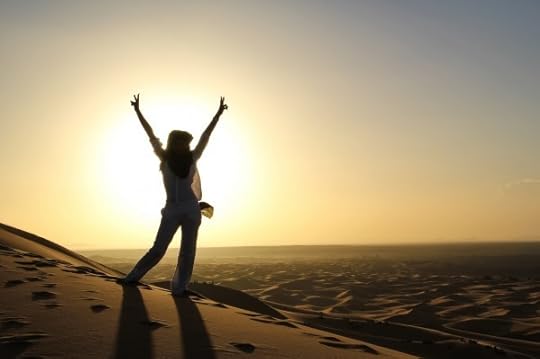
Photo: Ialo Fuentes
1. The Old West
In Nevada, the Old West is alive! Sort of. And yes, I am thoroughly guilty of romanticizing bygone eras, but when was the last time you went to a ghost town? Like a real ghost town? When was the last time you even heard the words “ghost town?” Hell, there are whole websites (like ghosttowns.com) that chronicle all the ghost towns of Nevada.
But that has naught to do with what I mean when I say the Old West is alive. The further out from Vegas you get, and the closer to the tiny towns that sprinkle the desert you get, the more boots, cowboy hats, and (thanks to open carry) handguns you see. Sure, you’re not going to get into a tiff over jumping a claim, but it’s hard not to feel like you’re walking in the footsteps of the pioneers. I always found something special about those old, leathery, salty folks who live on the outskirts of the city.
2. Area 51
In August and again in December of 2013, the internet’s many conspiracy theorists rejoiced, for these were the first times in history that the CIA and President officially acknowledged the existence of Area 51. Peers were somehow shocked by my lack of enthusiasm — any resident of NV could have told you it was a real place, and a good chunk of the touristy stuff you can do outside Vegas hinges on this fact.
Yes, it’s a real place, yes there are armed guards allowed to shoot you if you trespass. Yes, the “Extraterrestrial Highway,” which runs along the eastern side of the site, is a hotbed for UFO sightings. Apparently the truth is out there, in the Nevada desert.
3. Lax laws
Of course, I couldn’t write this section without nodding to the fact that prostitution is indeed legal in the state for towns under 400,000 people (which, save Vegas, is most of them). It’s a pretty massive industry, which my superficial research shows is having a harder time in recent years.
Personally, I’m far more interested in the sprinkling of Native American reservations throughout the state, and their ability to sell the most incredible fireworks you’ve ever seen. Ideological and ethical debate aside, there was a certain magic to being a child reading Harry Potter days before encountering my first roman candle. I remember stopping at Moapa River reservation on our way to a family camping trip. Inside the main building, I was a kid in a candy store. Except all of the candy explodes and could easily take off a limb. I was spoiled; these were the best fireworks you could find: mortars, bottle rockets, M80s, the real deal. The really ILLEGAL (everywhere else) deal.
And sure, you were legally allowed to discharge them on the premises, and many did, but where’s the fun in that? No, we’d stock up, drive far out to where the cops would take at least a few minutes to get to us, and light the sky on fire for an evening.
4. Fly Geyser
One of the sickest natural occurrences I’m aware of, and very high on my list to visit, is this accidentally manmade geyser in Washoe County. You’ve seen pictures of it — it looks like something out of Super Mario World. Sadly, the geyser is located on private property and is therefore closed to the public. Less sad are the wealth of personal accounts and tutorials available online for seeing it anyways.
5. Burning Man
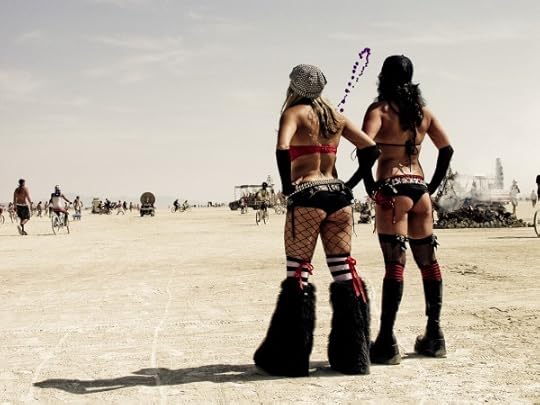
Photo: Mindaugas Danys
Somehow, only Nevada could provide the right atmosphere for Burning Man, which is why the Nevada desert has been the only venue for the event since the ’80s. The weeklong festival, held at the end of August, draws tens of thousands of people each year to celebrate art and radical expression in a makeshift city that disappears without a trace by September. For more, check out Matador’s full suite of Burning Man content.
6. Alien terrain
Those movies of yesteryear, where a team of space explorers land on Martian terrain and hop over red and tan swirly boulders around cliffs and up canyons, were most likely filmed in Nevada. In fact, coupled with the heat, you’d swear you were on a planet closer to the sun, where life is scarce and getting jumped by a Tusken Raider is a semi-legitimate concern. Plus, have you ever seen a rattlesnake? That’s some Dune-quality shit.
7. Nellis Dunes
If you’ve never experienced off-roading on sand dunes, you should probably get on it. Somehow I convinced myself that they were safe…that flipping my ATV would be like landing in a pillow (it wasn’t). But there’s a certain kind of shift in thought, from the utter fear of sliding (that driving on the pavement imbues in you) to its pursuit, which makes zooming around and weaving in the sand about as much fun as you can have with your pants on.
8. Petroglyphs

Photo: MadlyInLoveWithLife
Realizing that America had its own brand of hieroglyphics was a profound and patriotic wakeup call for a younger me. And the best part? In Nevada, they’re everywhere. This early cave- and rock-carving graffiti from America’s ancient tribes (some dating back 15,000 years) tells all kinds of stories, though we can still only decipher them as far as their literal pictorial representations.
9. Lake Mead / Hoover Dam
The Hoover Dam is worth the trip, at least once. You go to say you’ve seen it, but you stay because a day at Lake Mead, where the red rocks meet the blue water, makes for a consistently awesome time. Rent a boat for a day and you’ll find all kinds of caves and coves, be able to float your way across state lines, and see the dam from a vantage point that underscores its true size.
10. Carson City
Skip Vegas, skip Reno (no, seriously, skip Reno), because Carson City is cool. The state capital, it’s sort of where I imagine all the state’s history is hiding (that, and of course George Ferris, inventor of the Ferris wheel). It’s right there by Lake Tahoe, which is the woodsier version of Lake Mead.
Oh, and did I mention it’s named after Kit Carson…mountain-man Kit Carson? Carson City exists not only to provide evidence that there were, in fact, mountain men, but that one of them could rise above the others, distinguish himself, and have a state’s capital named after him. Badass.
11. Lizards
They may never love me like I love them, but damn I love lizards, and they’re everywhere in Nevada. Head out for a camping trip? Lizards. Walk through a drainage ditch? Lizards. Move a big-ass rock in your backyard? Fucking lizards, lizards everywhere. Not only are they fun to catch, they’re fun to observe. Watch them bask in the sun with sleepy eyes slowly recharging their hindlegs, watch them do their bizarre pushups and then dart across canyon floors, hopping and springing in and out of holes in the ground or rocks.
12. Great Basin National Park
As you probably know by now, if it’s a national park, it’s going to be incredible. Great Basin National Park is like that quintessential Bob Ross painting. There’s some mountains, some water, some snow, and happy little trees. It’s also home to over 320 species of wildlife, including 238 species of birds alone. All that, and the oldest living trees on Earth.
13. Lehman Caves
Yes, Lehman Caves are located in Great Basin National Park, but they’re too cool not to have their own section. These miles of marble caverns, consisting of a variety of geological formations, were discovered by Absalom Lehman in 1885 and are home to over 300 rare shield formations. The caves also served as a burial site for Native Americans for generations before Lehman arrived.
Ever in flux, several of the rooms have been closed to the public due to the rocks’ moving and shifting, and, y’know, the whole cave system is supporting a mountain.
14. Valley of Fire
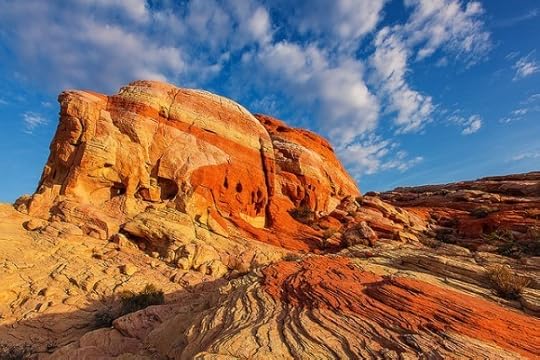
Photo: James Marvin Phillips
First and foremost, it’s called the Valley of Fire. It looks like Mars, and the Grand Canyon, and funnily enough, like my last mushroom trip. It’s beautiful and exactly the “reds” I talk about when I talk about missing Nevada. There are petroglyphs, hiking trails, wildlife, and the ever-present sense of nature’s internal struggle, wearing away the rock and creating the most interesting and bizarre formations you can conceive of. Plus you get to tell everyone you spent your weekend in the “Valley of Fire.” What’s not to love? 

My Gaza war numbers
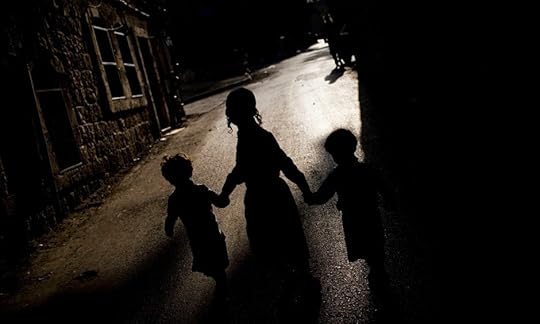
Photo: Bernat Armangue/AP (via)
Editor’s note: Jennifer is a non-Jewish American graduate student finishing a degree in Middle Eastern Studies at Tel Aviv University. After completing a bachelor’s degree focusing on Islam and the Middle East, she decided to seek her master’s degree in Israel, where she’s lived for the last two years.
15. 761. 3. 17. 2. These are my war numbers.
15
The international news right now seems to be very focused on the “numbers” of this war. Nearly as soon as they are committed to paper, or more commonly, on websites, blogs, or Twitter, they are made obsolete by new rockets and new air strikes, new death and new destruction. They are arranged in morbid little competitions: 779 dead Palestinians versus 35 dead Israelis; 2,323 Hamas rockets versus 3,454 Israeli air strikes. Three Israeli teenagers murdered in a car versus one Palestinian youth burned alive in a Jerusalem forest. Everyone seems to be seeking out the grotesque numbers, the sad numbers, the despicable numbers, the ones that can be added and arranged to convince others that they are supporting the “right” side.
We downplay each other’s pain to legitimize our own. Fifteen is the number of times I ran to a bomb shelter in the past few weeks. It is a small, pitiful, unimportant little number to most others but myself and my family. It is not shocking enough for news outlets. It is unworthy of attention when X Palestinians in Gaza City are suddenly homeless and X Israelis in Eshkol are being treated for shock from constant bombings. I’m just an American, and I just have 15 , but 15 is the center of my world this month.
761
I’ve lived in Israel just over two years now. The anniversary mimicked the arrival: untold hours spent sweating in the back of a heaving and shuddering Tel Aviv metro bus. Two years is an odd amount of time in a foreign country, occupying that opaque space between tourism and residency. In some ways, I’ve paid my dues. I can successfully negotiate my way out of an overpriced bag of pita. I have sweet-talked the notorious Vicki into numerous visa extensions at the Ministry of the Interior, universally acknowledged as the most wretched administrative office in greater Tel Aviv. I’ve bought a perfunctory amount of Ikea furniture for my small Holon apartment. I’ve participated. But I’m not assimilated in any of the ways that matter.
I’m not a citizen. Hell, I’m not even Jewish. I’m not fluent in Hebrew (yet). I have no personal stake in the goals of Zionism. I don’t want to spend my life here. I haven’t endured in two years the things Israelis endure in a lifetime; I only have two military operations under my belt.
3
I didn’t come for this. Could I have predicted that each year of my master’s degree would be accompanied by a war? I came for a degree, and quite accidentally, fell in love. It didn’t feel like a choice.
The number of times my itinerant downstairs neighbor has chastised my boyfriend and me for wearing flip-flops, screeching in rapid-fire Hebrew that we will surely break out necks while scurrying down the stairs to the building’s basement as air-raid sirens wail over our head. She’s probably right, but there’s no way I’m wearing sneakers to bed.
A girl stands beside me praying under her breath, with the Torah in one hand and an asthmatic puppy in the other. Boom… boom… boom… Once the Iron Dome interceptors have done their job, we wait a few extra minutes in our dust-covered basement in case any shrapnel or debris should find its way to our street, then plod back upstairs to finish dinner and alternate between frank, graphic conversations with our domestic friends and the soothing, unspecific messages we send our families back home.
17
The times that a speed-loving, teenage motorcyclist has raised my heart rate to a fever pitch recently, unintentionally replicating the escalating wail of an air-raid siren every time they rev their motors to accelerate. These are the things not easily quantifiable, but which shift my little life dramatically. Snapping at my boyfriend for scaring me by watching a video of a rocket attack, not realizing the sirens were only wailing through the computer’s speakers and not through my windows. The guilt for being a perpetually distracted nanny, getting caught by a bouncy ball to the temple because I was staring out the window, imagining rockets falling over the Tel Aviv skyline. Staring blankly when my four-year-old charge excitedly explains how his kindergarten class practiced for the “emergency fireworks.”
A normally quiet morning trip to the local children’s play-place is now a cacophony of some 40 children’s voices, because the basement-level facility has attracted scores of fearful parents. The kids are literally playing underground now. I spend hours alternately isolating and immersing myself in the lurid comments sections of any news article about the Middle East. I transpose every “Death to Jewish Zionist scum” message over the mental images of all my students here. I feel anxious.
2
The number of times my boyfriend and I have broken down. Mine came first: messy, soggy, and wailing like a wounded animal after a fruitless exchange of political opinions and insults on a Facebook thread. Scenes of the Gaza gore and accusations of my “complicity” in Israel’s military campaign stung me. I didn’t come for this. Could I have predicted that each year of my master’s degree would be accompanied by a war? I came for a degree, and quite accidentally, fell in love. It didn’t feel like a choice.
My boyfriend’s meltdown was less explicit, more internal. He’s more frightened than me, I think. His fear has roots. His first memory of rockets is from age six, sitting in the mamad (reinforced room) wearing a gas mask, back when Iraqi scuds were the terror in the skies. We’re both quick to anger and slow to look one another in the eye. I silently wonder what I’ve gotten myself into. He can’t choose where he was born, but I chose him. The deepness of the hate I read online directed at my partner because of the menorah on his passport terrifies me. Pundits, scholars, and keyboard warriors still question the reality of the Jewish nation, arguing about its right to exist. But time never stops for theory. My boyfriend’s childhood, sense of home, his memories — they are all linked here the same as the grandparents of my Palestinian friends. How many generations of each will feel that their homeland is under constant siege?
It’s an unfair thing, I’ve decided, to have your life and personal safety wrapped up in a conflict over which you exert no ownership or control. But stay quiet. Stay grateful. Because it’s less unfair than the alternative. 

July 28, 2014
What we lose by traveling too fast

Photo: Lulu Lovering
“YOU CAN’T SEE ANYTHING from a car; you’ve got to get out of the goddamned contraption and walk, better yet crawl, on hands and knees, over the sandstone and through the thornbush and cactus. When traces of blood begin to mark your trail you’ll see something, maybe.”
– Edward Abbey
It’s been nearly 50 years since Edward Abbey wrote Desert Solitaire, a declaration of love to the Southwest whose ripple effect left a legacy of environmentalism in its wake. But, in a world of expedient travel, do his words still carry weight? After walking, bicycling, and driving across America, this is what I have learned we sacrifice by traveling too fast.
1. Serendipity
On my first long-distance trip — a bike tour — I frequently told myself to avoid distractions that would cause me to delay my itinerary. This was on my mind the morning I crawled out of my tent to find myself surrounded by decorated caravans. There was an impromptu art festival taking place in the small riverside town of Stockholm, Wisconsin.
As jugglers drifted by and painters set up their stands in the early sunlight, my traveling partner and I debated whether to stay or make more miles. Four years later, I have never regretted deciding to stay and explore the little town that quadruples its population once a year.
2. Quality time
My journey from New Hampshire to Georgia was a harrowing 30-hour bus ride. I witnessed a drug deal, an attempted religious conversion, and a loud conversation about erotic dreams. During the night, I was woken every few hours by a scratchy PA system, prodded into a fluorescent bus station, and after ten minutes of blaring televisions, returned to my stiff seat.
My trip back took six months, covered nearly 2,000 miles by foot, and was much more enjoyable. I experienced violent illness, hail, and poisonous snakes, but always with the driving reminder that if I quit, I would have to take the bus home.
Traveling quickly saves time. But time is a nebulous concept that has been measured in everything from money to distance to cups of tea. I have learned that I prefer to measure my time in quality. For me, 30 hours on a bus was longer than six months in the woods.
3. Context
Hail the size of peach pits was pockmarking our bare legs and arms with reddish welts when we finally reached shelter in the Greyson Highlands. But the hectic sound of the deluge was replaced by our laughter as the hail suddenly stopped and a rainbow broke out of a countryside teeming with wild ponies. I would walk through a hailstorm daily if that were my reward each time.
Struggle, difficulty, and uncertainty are not words you’ll find in a tourist brochure, but they are words intrinsic to long-distance travel. Our lowest moments on the Appalachian Trail made us truly appreciate our highest.
4. Cultural exchange
Driving appealed much less to me. Watching the country go by behind glass made me feel separated from it; I spent most of my time looking in the rearview mirror. Hiking, we found that people in town wanted to talk to us, and our leisurely schedule afforded us the time to listen. We witnessed the gradual changes in landscape and local attitudes as the Deep South transitioned into the Northeast.
5. Human connections
On multiple occasions, traveling slowly has forced me to spend a lot of time with someone completely different than me. If we were seated next to each other on the bus, one of us probably would have moved. But instead, we always find common ground and often stay in touch after the trip is over. The bond between travel partners is made out of stronger glue than friendships built on similarities.
Bike touring and hiking, my immediate future was usually uncertain, and that vulnerability made me seem approachable. I made dozens of unlikely friends this way. In a car or on a bus, people treated me as one more tourist. They were polite, but distant.
6. Perspective
I spent several months in Montana before I got used to the “big sky.” It was an optical illusion — because the mountains were separated by flat expanses, the sky appeared larger. Similarly, after a week in Seattle I was shocked to realize that, unlike in Boston where honking is a hereditary instinct, no one honks their car horns in traffic.
I’ve always thought these quirks and small mysteries shape a place’s personality. When I’m on a schedule, though, I skip smaller things in favor of larger ones. Traveling the US by car, I made sure to stop at Mount Rushmore, the Grand Canyon, and Nashville, but I failed to visit numerous small canyons I had read about, hike through Joshua Tree, or have a real conversation with a stranger.
By comparison, when I was cycling across the US I toured the last standing Cold War-era missile site on a whim. Hiking, I visited abandoned mining towns hidden in the woods of Appalachia.
Travel, like most things in life, depends on your priorities. If you want to see something beautiful without any context, you can drive to the South Rim of the Grand Canyon and be on your way to New Mexico by sundown. Or you can forget about your destination and crawl. 

4 weeks of travel through Turkey
In Turkey – 2014 from Vincent Urban on Vimeo.
I FEEL LIKE so many people think Istanbul is all there is to Turkey, but this video reminds me how vast and dynamic this country really is. Filmmakers Clemens Krüger and Vincent Urban truly exhibit the diversity of Turkey’s landscape and people. Not to mention, their filmmaking skills are pretty kick-ass. Explore their four week journey through Turkey, from coast to coast, in five and a half minutes. 

Dutch friend vs. American friend
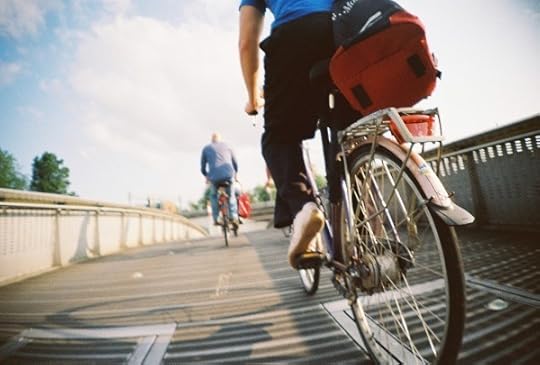
Photo: Brandon Giles
1. Your American friend obsesses about weight and body image. Your Dutch friend consumes some 3,000 calories daily, including large quantities of dairy, protein, and carbs slathered in mayo, but will never let a number on a scale ruin their day.
2. Your American friend’s health depends on how much medical care is in the household budget. In Holland, everyone receives good healthcare…including illegal immigrants.
3. Your American friend with no income faces homelessness and starvation. Your no-income Dutch friend gets welfare and possibly a living wage.
4. Your US friend is proud of the right to bear arms and may own a gun. Your Dutch friend finds it ridiculous that any private person would want to own a firearm and thinks the government should protect the public from such loonies.
5. Your American friend tells you to “Go fuck yourself.” Your Dutch friend may tell you to “Go get cancer” in a moment of rage. Whatever your Dutch friend is thinking or feeling, you’re bound to learn it in the frankest, most direct way possible.
6. Your American friend assumes everyone speaks English. Your Dutch friend is amazed if anybody has bothered to learn Dutch — a language spoken by a mere 20 million of the world’s 7+ billion people.
7. Your American friend embraces you with a hug or offers a high five when you meet. Your Dutch friend surrounds him/herself with an impenetrable “personal bubble,” but plops three air kisses on alternating cheeks if you’re good buddies.
8. Your American friend is proud of that gas-guzzling minivan parked in the driveway. Your Dutch friend owns at least one old, gear-less bike and uses it for daily transport.
9. Your American friend is accustomed to hearing bleeps and seeing pixelated body parts on TV. Your Dutch friend is shocked at censorship and finds it normal to see naked breasts and soft porn on TV and in print ads.
10. Your American friend believes socialism is the gateway to communism. Your Dutch friend thinks socialism is okay in moderation — it’s undiluted capitalism that opens the door to corporate greed.
11. Your American friend is accustomed to seeing politicians using families as campaign accessories. Your Dutch friend doesn’t know (or care) if Holland’s leaders are married, divorced, single, or whatever, and feels it’s ridiculous for politicians to use a spouse and kids as political eye candy.
12. Your American friend considers a VW Bug a tiny car. In Holland, it’s a mid-size vehicle.
13. At home with the windows closed and doors secured against nosy neighbors, your American friend smokes weed obtained with a medical marijuana license. Your Dutch friend relaxes with a joint in Vondelpark, feeling no need to hide a practice that’s been tolerated in Holland for decades.
14. Your American friend can change his or her given name on a whim. Your Dutch friend needs the king’s permission to do so (really!).
15. Your American friend is impressed by wealth and family pedigree. Your Dutch friend only shows interest in your background if you hail from old money. 

Matador Network's Blog
- Matador Network's profile
- 6 followers




